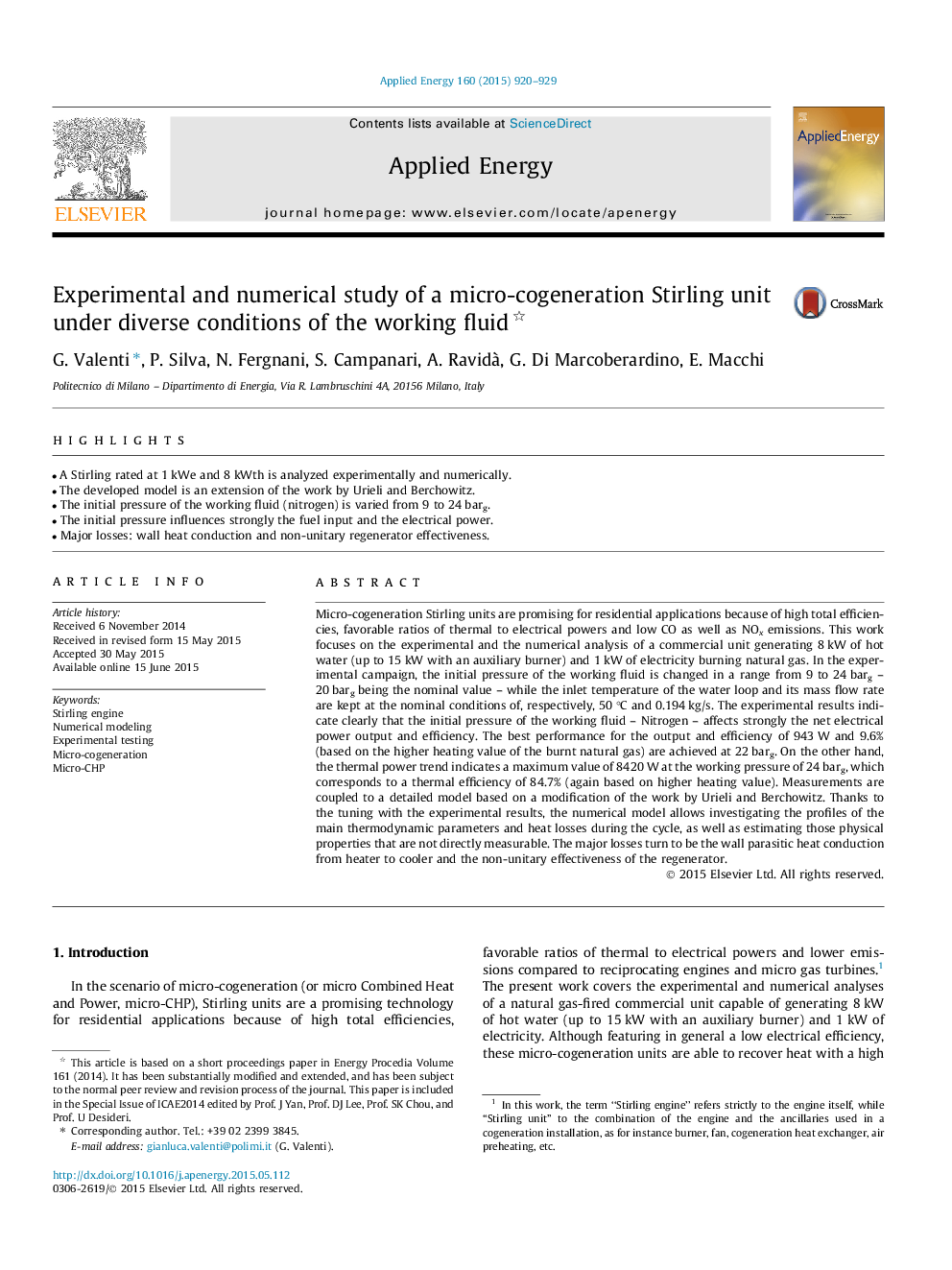| Article ID | Journal | Published Year | Pages | File Type |
|---|---|---|---|---|
| 6685467 | Applied Energy | 2015 | 10 Pages |
Abstract
Micro-cogeneration Stirling units are promising for residential applications because of high total efficiencies, favorable ratios of thermal to electrical powers and low CO as well as NOx emissions. This work focuses on the experimental and the numerical analysis of a commercial unit generating 8 kW of hot water (up to 15 kW with an auxiliary burner) and 1 kW of electricity burning natural gas. In the experimental campaign, the initial pressure of the working fluid is changed in a range from 9 to 24 barg - 20 barg being the nominal value - while the inlet temperature of the water loop and its mass flow rate are kept at the nominal conditions of, respectively, 50 °C and 0.194 kg/s. The experimental results indicate clearly that the initial pressure of the working fluid - Nitrogen - affects strongly the net electrical power output and efficiency. The best performance for the output and efficiency of 943 W and 9.6% (based on the higher heating value of the burnt natural gas) are achieved at 22 barg. On the other hand, the thermal power trend indicates a maximum value of 8420 W at the working pressure of 24 barg, which corresponds to a thermal efficiency of 84.7% (again based on higher heating value). Measurements are coupled to a detailed model based on a modification of the work by Urieli and Berchowitz. Thanks to the tuning with the experimental results, the numerical model allows investigating the profiles of the main thermodynamic parameters and heat losses during the cycle, as well as estimating those physical properties that are not directly measurable. The major losses turn to be the wall parasitic heat conduction from heater to cooler and the non-unitary effectiveness of the regenerator.
Related Topics
Physical Sciences and Engineering
Energy
Energy Engineering and Power Technology
Authors
G. Valenti, P. Silva, N. Fergnani, S. Campanari, A. Ravidà , G. Di Marcoberardino, E. Macchi,
